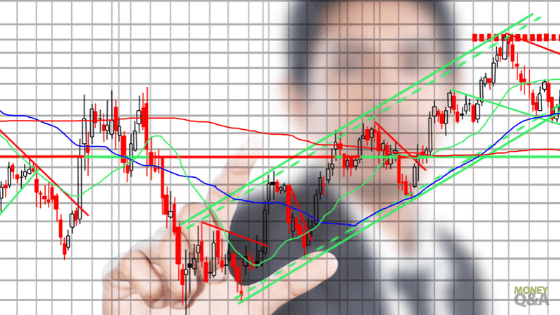
Swing trading is a popular way for investors to capitalize on short-term stock movements. If done correctly, swing trading can be profitable for investing in the stock market. In this WB Trading review, we’ll dive into the pros and cons and how you can get started with swing trading strategies.
What Is Swing Trading?
Swing trading is a unique trading strategy for stocks and other financial instruments. It attempts to capture gains in the stock over a period that ranges from one day to one week or longer.
Traders using the swing trading strategy try to identify stocks that they believe are undergoing short-term price fluctuation and seasonal patterns based on monetary policies and news releases.
To do so, traders must sow weekly charts, technical analysis summaries, volume indicators, support and resistance levels, and news insights that shape the current trend of an asset.
This approach typically uses small amounts of leverage, making it advantageous for small investors who wish to minimize market risk. Swing traders also utilize stop orders in their process. They may be looking to achieve holding periods exceeding one full day to complete specific patterns before securing a profit or losses.
Pros of Swing Trading Strategies
There are many benefits associated with trading strategies that allow traders to take advantage of short-term price fluctuations in the stock market. Here are some of them:
Capitalizes on Short-Term Price Movements
Swing trading seeks to capitalize on short-term price movements, typically over a few days to several weeks. This allows traders to exploit market volatility and profit from price fluctuations.
Reduced Exposure to Market Risks
Compared to day trading, swing trading strategies tend to have lower risks as traders hold positions longer, so they are not as exposed to sudden market movements.
Fewer Trading Decisions
Swing trading strategies typically require fewer trades than day trading or scalping strategies, so traders do not need to make as many trading decisions. This can lead to less stress and better decision-making.
Less Time-Consuming
Unlike day trading, which requires traders to monitor the market constantly, swing trading requires less time and attention, making it ideal for traders who have other commitments or cannot devote full-time attention to trading.
Overall, swing trading strategies can be an effective way for traders to take advantage of short to medium-term price movements and potentially generate higher returns while minimizing exposure to market risks.
Cons of Swing Trading Strategies
While swing trading strategies can have many advantages, there are also some potential drawbacks that traders should consider before implementing this approach.
Requires More Market Knowledge
Unlike buy-and-hold strategies, swing trading requires a deeper understanding of market conditions and technical analysis. Traders must identify potential entry and exit points based on market trends requiring expertise.
Exposure to Overnight Risks
As traders hold positions longer than day trading, there’s an exposure to overnight risks, such as unexpected news events or economic announcements that can impact the market. This can result in significant losses if not managed properly.
Emotions Can Impact Decision-Making
Swing traders may be more likely to make decisions based on emotions such as fear or greed as they hold positions longer than day traders. This can lead to irrational decision-making and result in losses.
While swing trading can be a profitable trading strategy, it requires a certain level of expertise and market knowledge. Traders should know the potential risks and drawbacks before implementing this approach.
How To Get Started With Swing Trading Strategies
Swing trading strategies offer an enticing opportunity for investors seeking to capitalize on short-term market fluctuations while limiting the risks of longer-term investments.
The foundation of a successful swing trading approach lies in understanding the fundamentals of technical analysis, identifying trends, support, and resistance levels, and utilizing risk management techniques.
Building a solid foundation is crucial before diving into swing trading. Learn to read trading charts and grasp the latest market news that shapes price movements. Many investing platforms offer educational resources and tools, such as market scanners, to assist traders in identifying potential swing trade opportunities.
Developing a well-defined trading plan based on clear rules and guidelines is essential for disciplined decision-making and long-term profitability. By fully immersing yourself in the study of swing trading and continually refining your strategies, you can increase the probability of capturing profitable opportunities in dynamic market environments.
Final Thoughts
Swing trading offers traders an opportunity to capitalize on short-term price movements in the stock market—but it comes with its share of risks and rewards! If done correctly, swing trading can help investors diversify their portfolios and potentially earn more money than traditional long-term investing methods would allow.
However, before getting started, new traders must research and understand the risks of this investing strategy. By following the tips in this WB Trading review above and doing due diligence beforehand, you will be well on your way toward becoming a successful swing trader!
